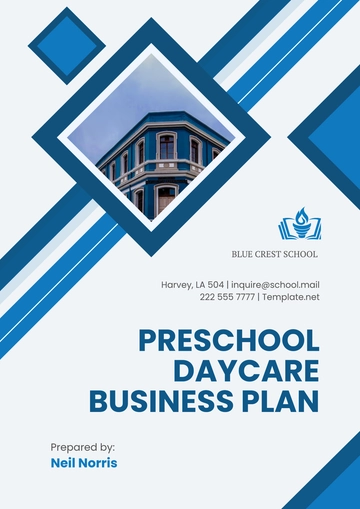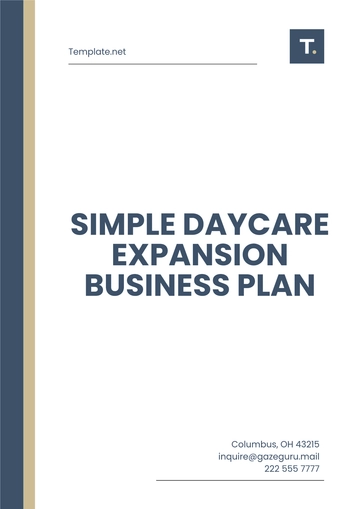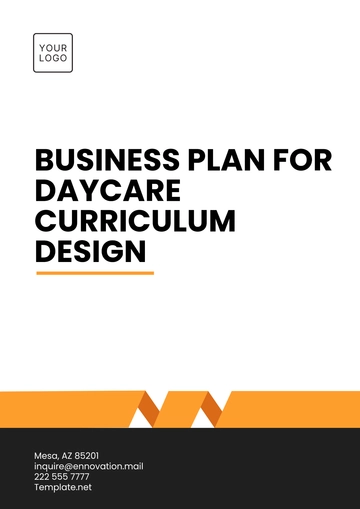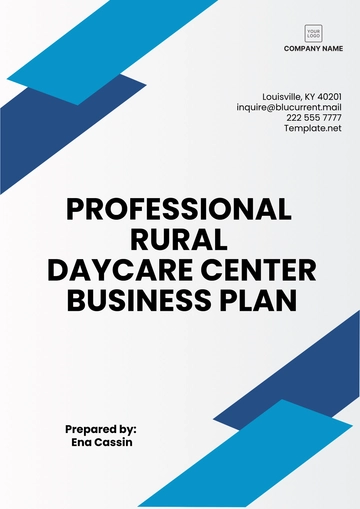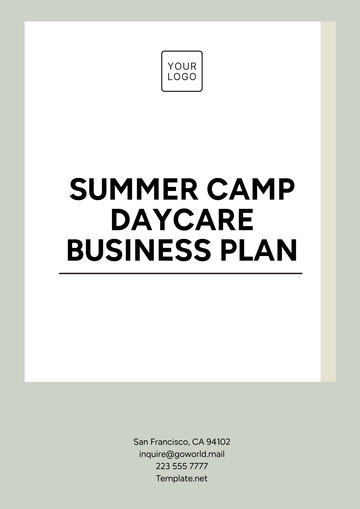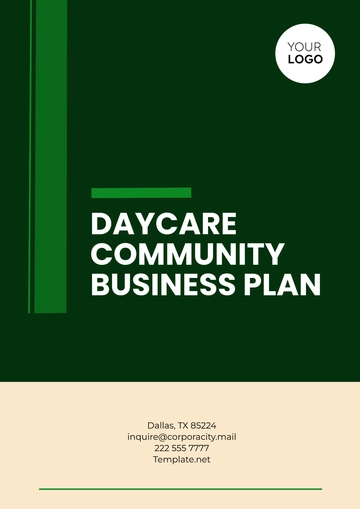Free Multilingual Daycare Business Plan Format

1. Executive Summary
Business Name: [Your Company Name]
Mission Statement: A brief statement that captures the daycare's mission, core values, and goals, ensuring alignment with the diverse needs of families.
Business Overview: An overview of the daycare’s services, including the languages offered and any specialized care provided.
Target Market: Describe the target demographic, including specific multilingual communities the daycare aims to serve.
Financial Overview: A summary of the daycare's financial projections, funding needs, and growth goals.
2. Company Description
Business Structure: Outline the legal structure of the business (e.g., sole proprietorship, partnership, LLC).
Services Offered: Detailed list of services (e.g., full-time care, part-time care, special programs for children, after-school care).
Languages Offered: Specify the languages spoken by staff and included in the daycare's curriculum (e.g., English, Spanish, French).
Unique Selling Proposition (USP): Highlight what differentiates the daycare, such as language immersion programs or cultural inclusivity.
3. Market Research
Industry Analysis: Provide a brief overview of the daycare industry, focusing on multilingual services and the increasing demand for inclusive childcare.
Target Market Analysis: Define the geographical location of your daycare, the languages spoken in the community, and the specific needs of multicultural families.
Competitive Analysis: Analyze competitors in the area who offer multilingual services and identify strengths and weaknesses.
Marketing Strategy: Outline strategies to attract multilingual families, including multilingual advertisements, partnerships with local community centers, and participation in multicultural events.
4. Services and Programs
Curriculum: Describe the curriculum, with a focus on bilingual or multilingual education, cultural diversity, and inclusion. This could include language development programs, cultural awareness activities, and social-emotional learning.
Care Programs: Include a detailed breakdown of the care options available (e.g., age-specific care, part-time, full-time, flexible hours).
Special Programs: Highlight any unique programs, such as language immersion or international holiday celebrations, designed to cater to multilingual families.
Language Support Services: Detail the support systems in place to help children adapt to and thrive in a multilingual environment, such as language tutors or bilingual staff.
5. Management and Operations
Management Team: Describe the qualifications and experience of the management team, highlighting multilingual capabilities.
Staffing Plan: Outline the staffing requirements, focusing on the need for multilingual staff to meet the needs of diverse families.
Operations Plan: Provide an overview of the daycare's day-to-day operations, including hours of operation, staff-to-child ratios, and safety protocols.
Training Programs: Discuss any ongoing training for staff, especially related to multilingual communication and cultural competence.
6. Financial Plan
Revenue Model: Explain the daycare's pricing structure (e.g., hourly rates, monthly fees) and payment options (e.g., discounts for multiple children, sliding scales).
Start-up Costs: List the initial costs required to start the daycare (e.g., facility rental, licensing fees, marketing, materials for bilingual education).
Projected Income: Provide projections for revenue and expenses for the first 3-5 years, broken down by language-based services.
Funding Requirements: Detail the amount of funding needed and how it will be used to expand or improve multilingual services.
7. Marketing and Sales Strategy
Branding: Create a brand identity that emphasizes multilingualism and cultural diversity, using logo designs, taglines, and messages in different languages.
Digital Marketing: Plan for an online presence, including a website and social media platforms in multiple languages, targeting multicultural families.
Community Engagement: Partner with local multicultural organizations, schools, and community centers to build trust and attract multilingual families.
Referral Programs: Develop a referral program that encourages current families to recommend the daycare to other multilingual families.
8. Legal and Regulatory Considerations
Licensing and Certification: Outline the legal requirements for operating a daycare, including licensing and certifications specific to multilingual services.
Health and Safety Regulations: Ensure compliance with local health and safety regulations, including guidelines for childcare centers in multilingual settings.
Data Protection and Privacy: Address the privacy of families, especially those from international backgrounds, ensuring that data is protected and handled in compliance with local laws.
9. Financial Projections and Funding
Profit and Loss Projection: A table or summary of expected income, expenses, and net profit for the next 3-5 years.
Break-even Analysis: Determine when the daycare is expected to break even based on the projected number of multilingual families enrolled.
Cash Flow Analysis: Provide an overview of expected cash flow, considering payment cycles from multilingual families and expenses for bilingual resources.
Funding Sources: Identify potential funding sources (e.g., loans, grants, investors) to support the daycare's multilingual initiatives.
10. Appendices
Market Research Data: Provide any supporting market research, including statistics on the local population's language preferences.
Staff Resumes: Attach resumes for key management and staff members, emphasizing their language skills and cultural competence.
Licensing and Certification Documents: Include copies of required daycare licenses, health and safety certifications, and language support credentials.
Financial Statements: Attach detailed financial statements, including projected income, cash flow, and balance sheets.
Contact Information
Owner/Operator Name: [Your Name]
Email: [Your Email]
Website: [Your Company Website]
Social Media Links: [Your Company Social Media]
- 100% Customizable, free editor
- Access 1 Million+ Templates, photo’s & graphics
- Download or share as a template
- Click and replace photos, graphics, text, backgrounds
- Resize, crop, AI write & more
- Access advanced editor
The Multilingual Daycare Business Plan Format Template from Template.net is fully editable and customizable, allowing you to create a plan that suits your daycare's multilingual needs. With sections for services, market analysis, and financials, you can easily tailor every detail. Editable in our AI Editor Tool, it ensures a professional and seamless planning experience.
You may also like
- One Page Business Plan
- Coffee Shop Business Plan
- Restaurant Business Plan
- Food Business Plan
- Real Estate Business Plan
- Executive Summary Business Plan
- Cover Page Business Plan
- Nonprofit Business Plan
- Daycare Business Plan
- Construction Business Plan
- Startup Business Plan
- Medical Business Plan
- Bakery Business Plan
- Service Plan
- Hotel Business Plan
- Catering Business Plan
- School Business Plan
- Healthcare Business Plan
- Transportation Plan
- Sports Plan
- Car Wash Business Plan
- Salon Business Plan
- Clothing Business Plan
- Farming Business Plan
- Boutique Plan


